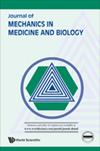睡眠三针针刺技术对慢性原发性失眠患者穴位温度变化的影响:一项随机对照试验的研究方案
IF 0.6
4区 医学
Q4 BIOPHYSICS
引用次数: 0
摘要
背景:慢性原发性失眠症(CPI)是临床常见病,近年来发病率呈上升趋势。理论上,CPI患者的穴位温度高于正常人群,同时疲劳指数和颅内动脉流速升高。长期以来,针灸一直被用于治疗失眠,而睡眠三针针灸(STA)方法代表了一种有希望的治疗失眠的方法。然而,迄今为止还没有研究评估这种技术降低穴位温度值或改善治疗个体失眠严重指数(ISI)的能力。方法:采用前瞻性、随机、评价盲、对照试验。总共将招募102名患有不同失眠严重程度(轻度、中度、重度)的成年CPI患者,并随机分为六个大小相同的组。然后,这些组中的患者将接受STA和认知行为治疗(CBT)或单独的CBT。针灸每次治疗30次,每周2-3次(每周期7天),最多10次,共4个周期。所有患者均接受CBT治疗4周。此外,还将招募17名患者作为健康对照组。主要结局包括穴位温度变化和ISI值,而次要结局包括疲劳指数值、颅内动脉流速和匹兹堡睡眠质量指数(PSQI)值。讨论:本研究旨在验证STA降低CPI患者穴位温度、改善ISI值的理论。试验注册:中国临床试验注册中心(http://www.chictr.org.cn), ID: ChiCTR2100048704。注册于13/07/2021本文章由计算机程序翻译,如有差异,请以英文原文为准。
The effects of the sleep three-needle acupuncture technique on acupoint temperature variations in patients with chronic primary insomnia: a research protocol for a randomized controlled trial
Background: Chronic primary insomnia (CPI) is a commonly encountered clinical disease, the incidence of which has been rising in recent years. In theoretical contexts, the temperature of acupoints in CPI patients is higher than that in unaffected individuals together with concomitant increases in fatigue index and intracranial arterial velocity. Acupuncture has long been used to treat insomnia, and the sleep three-needle acupuncture (STA) approach represents one promising such treatment for this condition. However, no studies to date have assessed the ability of this technique to lower acupoint temperature values or to improve the Insomnia Severity Index (ISI) in treated individuals. Methods: The present exploration is a prospective, randomized, assessor-blind, controlled trial. Totally, 102 adult patients with CPI will be recruited with varying levels of insomnia severity (mild, moderate, severe) and randomized into six equally sized groups. Patients in these groups will then undergo STA together with cognitive-behavioral therapy (CBT) or CBT alone. Acupuncture will be administered for 30[Formula: see text]min per treatment 2–3 times per week (7 days per cycle) for a maximum of 10 sessions in 4 cycles. All patients underwent CBT for 4 weeks. In addition, 17 patients will be recruited for a healthy control group. Primary outcomes will include acupoint temperature variations and ISI values, while secondary outcomes will include fatigue index values, intracranial arterial velocity, and Pittsburgh Sleep Quality Index (PSQI) values. Discussion: This study aims to test the theory that STA can lower acupoint temperatures and improve ISI values in CPI patients. Trial registration: Chinese Clinical Trial Registry ( http://www.chictr.org.cn ), ID: ChiCTR2100048704. Registered on 13/07/2021.
求助全文
通过发布文献求助,成功后即可免费获取论文全文。
去求助
来源期刊

Journal of Mechanics in Medicine and Biology
工程技术-工程:生物医学
CiteScore
1.20
自引率
12.50%
发文量
144
审稿时长
2.3 months
期刊介绍:
This journal has as its objective the publication and dissemination of original research (even for "revolutionary concepts that contrast with existing theories" & "hypothesis") in all fields of engineering-mechanics that includes mechanisms, processes, bio-sensors and bio-devices in medicine, biology and healthcare. The journal publishes original papers in English which contribute to an understanding of biomedical engineering and science at a nano- to macro-scale or an improvement of the methods and techniques of medical, biological and clinical treatment by the application of advanced high technology.
Journal''s Research Scopes/Topics Covered (but not limited to):
Artificial Organs, Biomechanics of Organs.
Biofluid Mechanics, Biorheology, Blood Flow Measurement Techniques, Microcirculation, Hemodynamics.
Bioheat Transfer and Mass Transport, Nano Heat Transfer.
Biomaterials.
Biomechanics & Modeling of Cell and Molecular.
Biomedical Instrumentation and BioSensors that implicate ''human mechanics'' in details.
Biomedical Signal Processing Techniques that implicate ''human mechanics'' in details.
Bio-Microelectromechanical Systems, Microfluidics.
Bio-Nanotechnology and Clinical Application.
Bird and Insect Aerodynamics.
Cardiovascular/Cardiac mechanics.
Cardiovascular Systems Physiology/Engineering.
Cellular and Tissue Mechanics/Engineering.
Computational Biomechanics/Physiological Modelling, Systems Physiology.
Clinical Biomechanics.
Hearing Mechanics.
Human Movement and Animal Locomotion.
Implant Design and Mechanics.
Mathematical modeling.
Mechanobiology of Diseases.
Mechanics of Medical Robotics.
Muscle/Neuromuscular/Musculoskeletal Mechanics and Engineering.
Neural- & Neuro-Behavioral Engineering.
Orthopedic Biomechanics.
Reproductive and Urogynecological Mechanics.
Respiratory System Engineering...
 求助内容:
求助内容: 应助结果提醒方式:
应助结果提醒方式:


